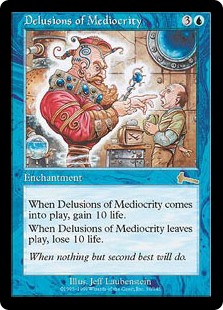I read, Win Bigly, by Scott Adams. IT is THE definitive book on cognitive persuasion in the Trump era. After I got in a twitter battle and almost lost my job, my uncle, a lawyer, told me, “You think that everyone is like you and wants to hear logical rational arguments on issues, then carefully choose the most reasonable action in all circumstances. You need to learn that the vast majority of all humans ARE NOT LIKE THAT and want nothing to do with anything bearing any resemblance to reason! SHUT THE FUCK UP!”
This is essentially the thesis of Win Bigly. I have summarized it here in a useful guide bearing the major take home messages and described how to actively implement it into your life.
Persuasion Protocols – according to Win Bigly by Scott Adams
The Win Bigly Thesis: Humans don’t use facts to make decisions; mass delusions are the norm of human nature; using persuasion tactics to lead is effective; self-persuasion allows us to hack our own minds.
Action items you can do every day to build your persuasion:
- Do favors for other people
- Associate with credible people.
- Rarely, if ever, apologize.
- Stake a bold claim; and be right.
- Look for things that are easy to change; get an easy win when you are in any new situation right away.
- Create bold psychological anchor points before you negotiate or debate.
- Give rewards, but inconsistently. Unpredictable rewards promote addictions.
- Be High Energy.
- Suck up attention.
- Create visual nicknames.
- Crowd out bad thoughts with optimistic thoughts.
- Create situations with two ways to win and no way to lose.
- Direct requests are persuasive. Ask people for what you need!
- Build directional movement and momentum, which is persuasive.
- Graft yourself to aspirations.
- Graft yourself to habits.
Persuasion Filter (pass writings/presentations through this filter as needed):
- Think past the sale; details on this tactic here:
- Ignore talking about inconvenient facts; leave out anything objectionable to anyone.
- Use Visuals, or mentally make people imagine the scene.
- Repetition, Repetition, Repetition, Repetition, Repetition
- Appeal to Emotions
- Simplicity
- Directional Movement and momentum is persuasive.
- Confidence – people flock to the confidant voice- people prefer certainty over uncertainty.
- Credibility – people flock to the credible person; discuss your credentials.
- It is easy to persuade people about something they already want.
- preemptively answer questions you know your listeners are thinking about.
- Leave out unimportant details and let your audience fill the gaps with their own characters.
- Good humor is persuasive. Sarcasm is not so persuasive.
- Fears are persuasive
- Identity is persuasive (your group finds you more persuasive than your outgroup)
- Aspirations are persuasive. Graft yourself to aspirations.
- Habits are persuasive. Graft yourself to habits.
- Use the High ground maneuver: bringing the argument to a level where everyone agrees.
- Who is your tribe? We like those who are similar to us.
- Contrast is persuasive.
- People associate things together (two ideas) that are in proximity regardless of context…
- People get used to minor annoyances over time.
- Direct requests are persuasive.
- repetition is persuasive.
- match the speaking style of your audience.
- Be the biggest badass on an issue, then lead.
- If people are leaning your way, but afraid to commit from other external pressures, you can give people a “fake because” reason to rationalize their support for your cause; most times this is enough.
Generate Discussion (Use these tactics to generate discussion about what you care about):
- Whatever people talk about and think about becomes important.
- Make issues you are strongest on, the most discussed.
- Intentional, minor detail errorss, make people discuss subjects. Mistaks can be used to manipulate.
- Be directionally accurate, but exaggerate, people will spend endless time discussing the exaggeration.
- Intentional wrongness. Be just a bit wrong, operate on the edge and you will generate discussion.
Beware! You are in for trouble now!
- people are not rational and do not want to debate with reason.
- inducing cognitive dissonance is dangerous. (persuading people that they are wrong is dangerous)
- Don’t trust data that cannot predict.
- Don’t use analogies.
- Mass delusions and Confirmation Bias are the norm of human nature. You can predict mass delusions by identifying areas where there are a) Complicated prediction models with many variables and assumptions. B) Financial and psychological pressure to conform to a consensus.
- Experts are frequently delusional and wrong.
- Attacking a person’s belief makes them believe it even more.
- What people think you are saying is more important than what you are saying. (read between the lines, is not persuasive). People will be persuaded by literal meanings and hold you to literal interpretations of your statements. This can be used to manipulate.
- Avoid falling into traps that confirm others’ confirmation biases about you!
- People associate things together (two ideas) that are in proximity regardless of context… ex. If you end up endlessly talking about something horrible you will be associated with that horrible thing.

